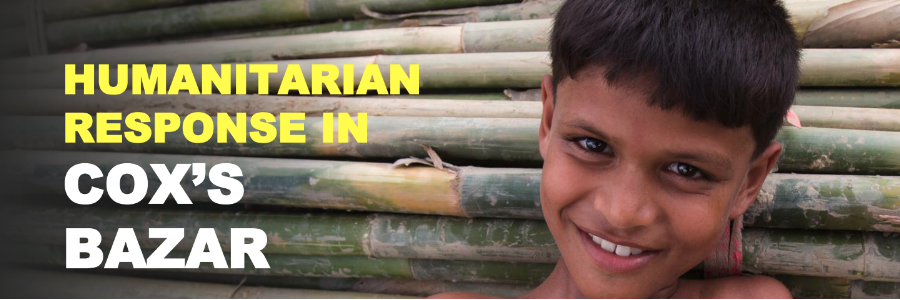What you need to know today
- A total of 618,000 forcibly-displaced Myanmar nationals have entered Bangladesh since 25 August (Source: ISCG report, 14 November)
- BRAC’s total coverage (based on sanitation) is 449,200 people with installation of 11,320 latrines (25 today). BRAC ensures access to safe water for 291,768 people through 1,128 tube wells, three deep tube wells, and three ring wells. 1,245 bathing cubicles were set up especially for women and adolescent girls.
- BRAC’s 10 primary health centers and 50 health camps have provided 378,238 services (9,044 patients today).
- 12,425 sacks of compressed rice husk (1,925 today) have been distributed as NEW AND IMPROVED ACTIVITIES alternative fuel source.
- To further improve the quality of our services, trainings are being provided to our staff on the ground. 146 outreach workers (ORW) have received training on CFS management and psychosocial support and 40 social workers (SW) has been trained on case management training. 110 health workers also received three days of training.
- A total of 420 mahogany, neem, arjun and acacia trees have been planted (100 today) in the settlements to contribute to afforestation.
Key Challenges
- Cultural barrier:
Due to conservative culture of the FDMNs, families are hesitant in enrolling adolescent girls for educational services. Engaging women volunteers who can support child protection and education activities is taking an extra amount of effort for the same reason.
- Access to water and storage:
Families are still facing difficulties collecting water from distance and storing it for daily use. Large containers that can store sufficient amount of water for the use of all members of the household are needed.
What do people need most?
Shelter materials, such as high-quality tarpaulins; cold weather items, including blankets, floor mats, clothes; fuel for stoves; water storage containers; and solar/flash lights.
Original source and full report: BRAC
Published on 15 November 2017

